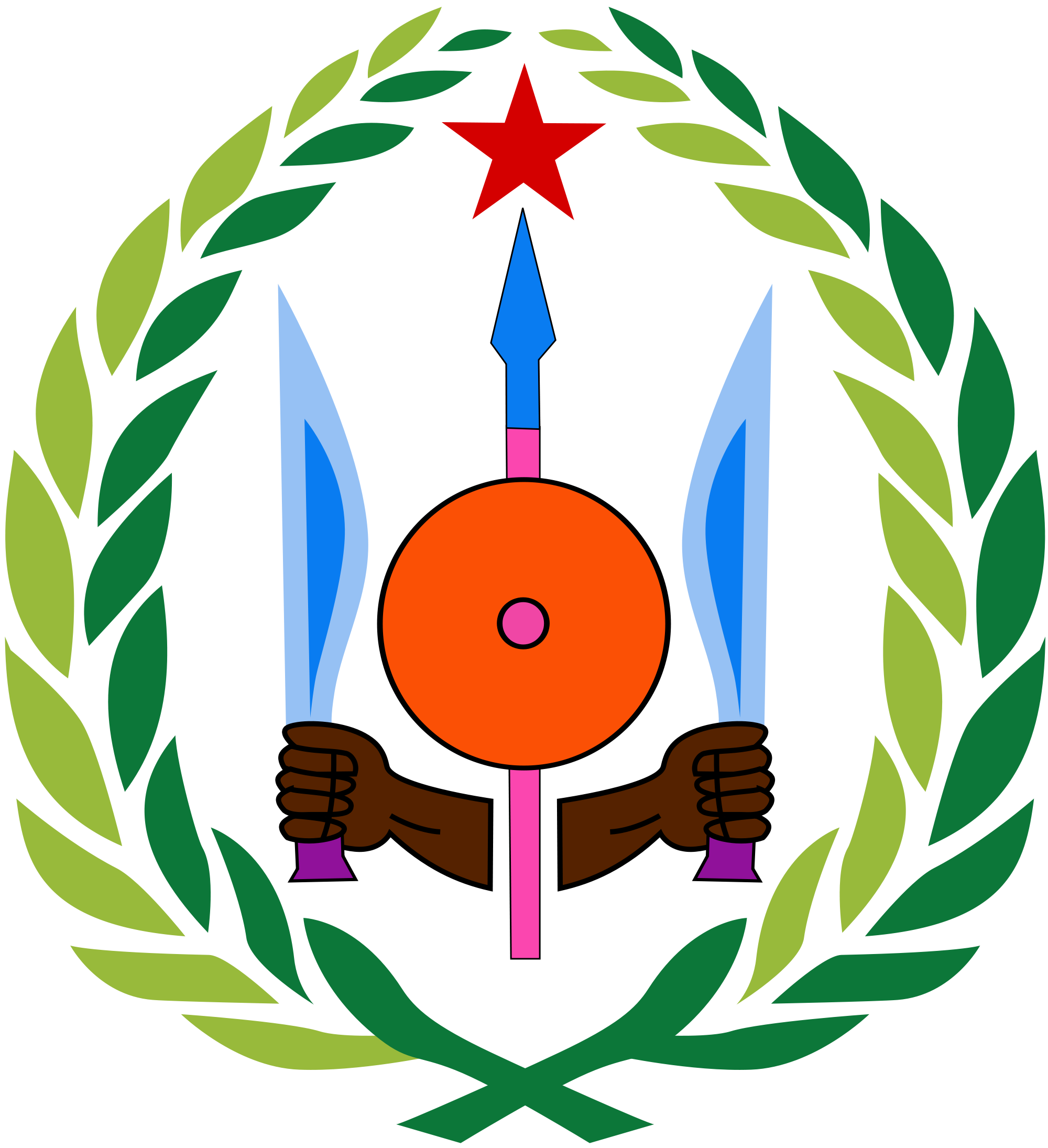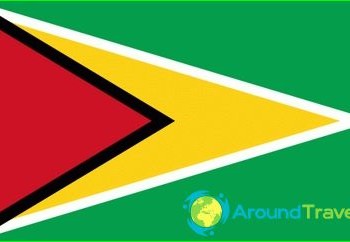Coat of arms of Djibouti

The coat of arms of Djibouti reflects the entire intensity of the internal confrontation inherent in the population of this country. Until recently, such a state did not exist on the political map of the world. Until 1977, on the territory of this country, which is located near the Horn of Africa, there was a French colony called the French Territory of Afars and Issas. This name clearly reflected the state of affairs associated with the eternal struggle between the two clans. This circumstance is reflected in the modern coat of arms of the Republic of Djibouti..
The main elements of the coat of arms
On the main emblem of Djibouti, two laurel branches can be seen, freely flowing around the central structure of the coat of arms. These branches symbolize the glory of the young state. At the bottom, these two branches are intertwined, so together they practically form a laurel wreath. The rest of the structure is composed of the following elements: shield; spears; two hands; two swords.
At the top of the coat of arms, a red five-pointed star shines, embodying the solidarity of the peoples of Djibouti. It is located on top of a vertically placed spear, slightly covered in the middle by a shield. To the right and left of the spear, traditional for African tribes, there are hands holding naked swords..
Hidden symbolism of the coat of arms
The main semantic element of the coat of arms of Djibouti is hands with swords. If the spear and shield are the traditional weapons of the local population, then the hands depict the two main peoples of the country: Afars and Issa. They tried to convey the unity of these peoples in the coat of arms, but everything is not as rosy as it looks on the main emblem of the country..
The Danakil clans (Afars) and Somalis (Isss) have long been at enmity with each other, although they belong to the same linguistic group. During the period of domination over the country of France, the Afar clan dominated the political life of Djibouti. With the fall of French control, the Danakil domination came to an end, and almost all the political levers of government were in the hands of the Somalis. Already in the early 80s, the country was on the brink of a civil war, which nevertheless happened in the 90s and ended only in 2000..
Therefore, in the coat of arms of Djibouti, the meaning of a secret confrontation between two antagonistic clans is hidden. However, in the era of the struggle for independence, these clans showed unity. In 1977, in a referendum, they voted for the independence of the republic, which was reflected in the main emblem of the state..


